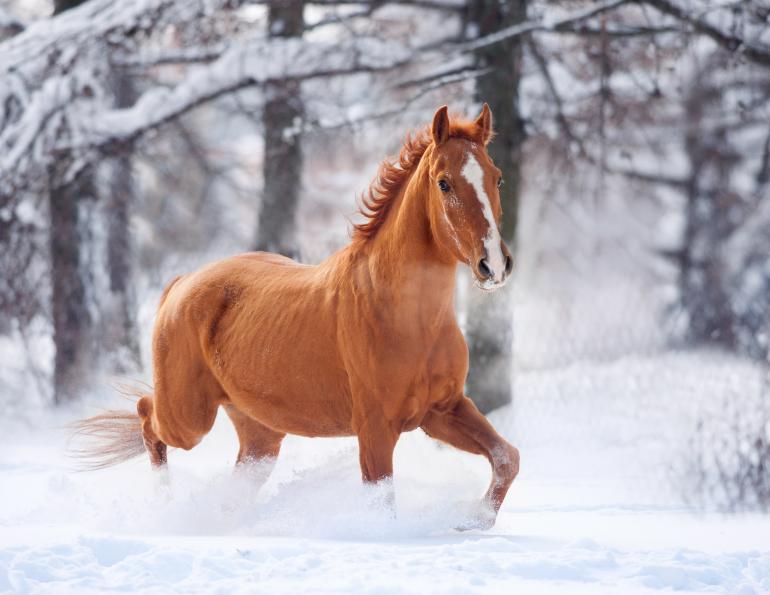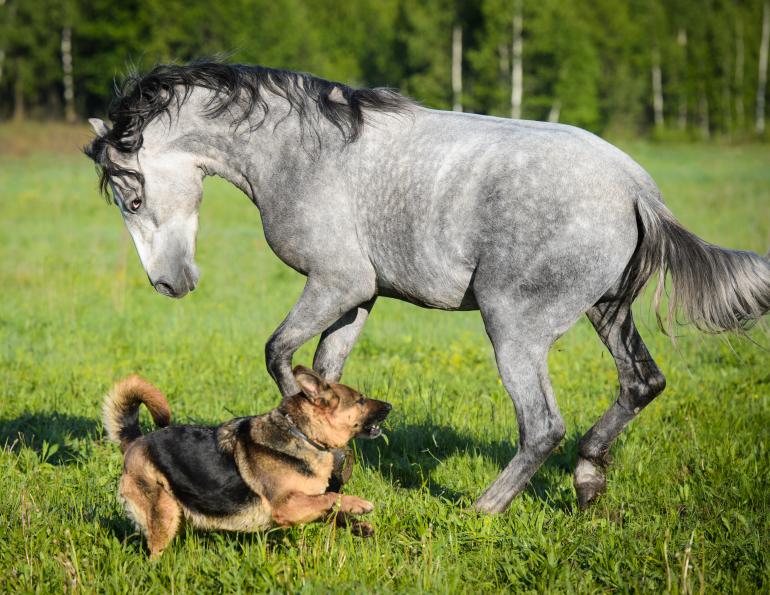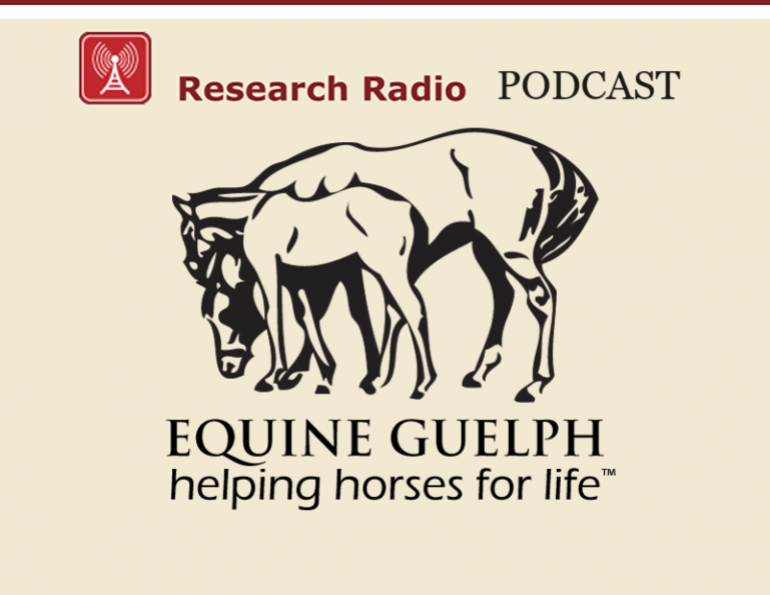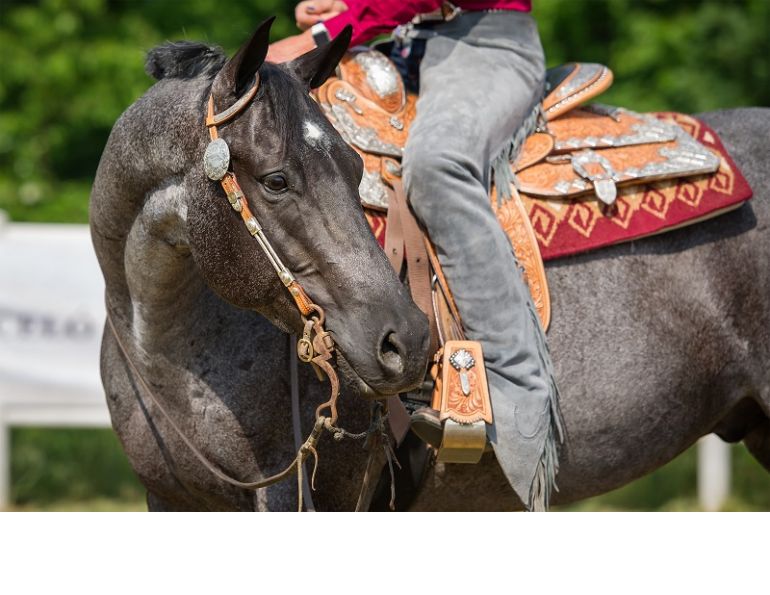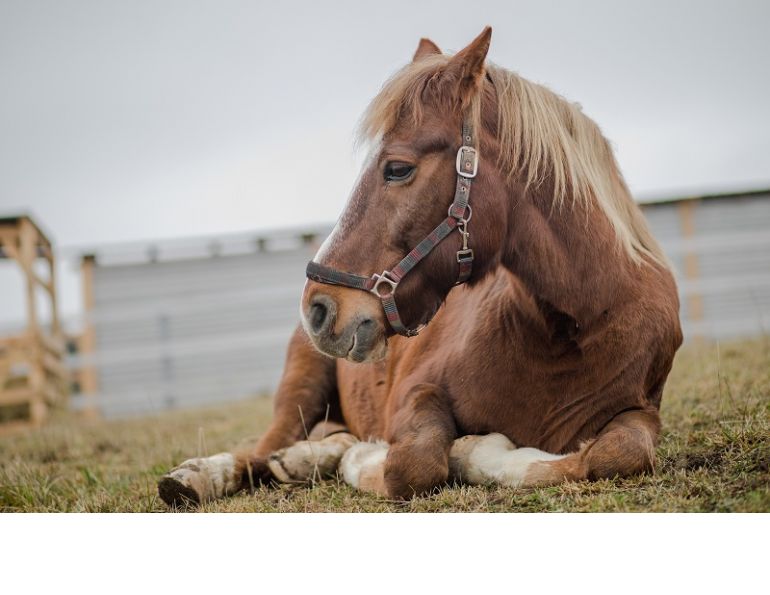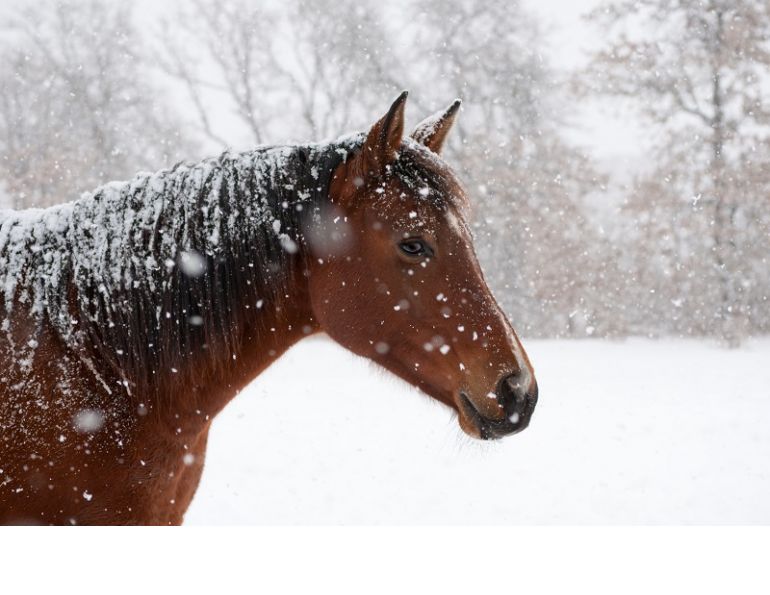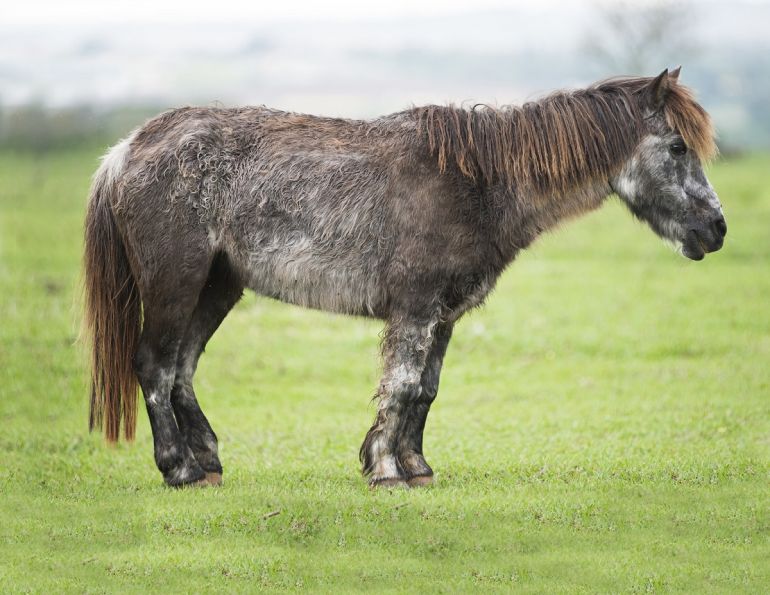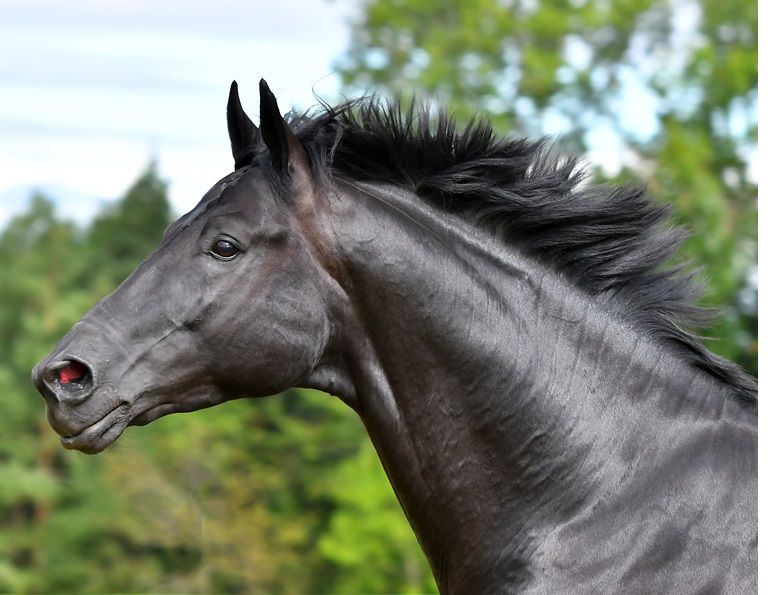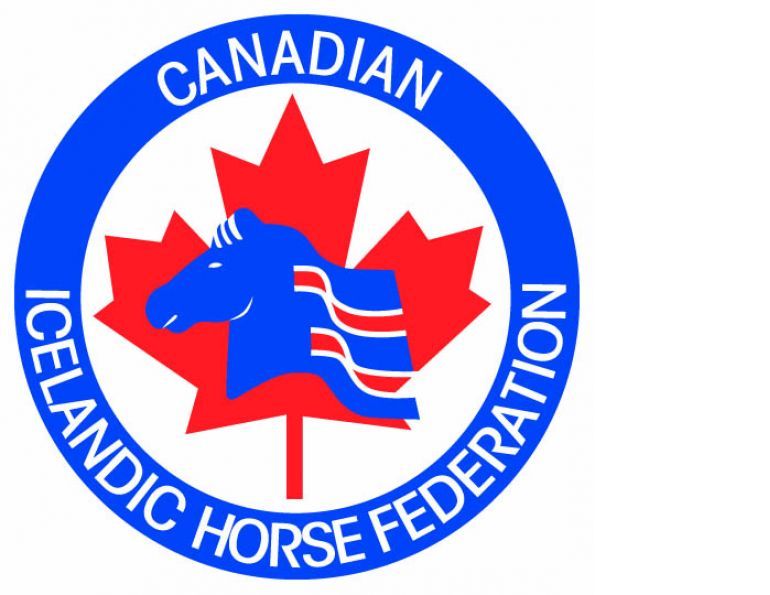By Shelagh Niblock, BSc.Ag., PAS
When the days start getting shorter, horse owners know that winter is just around the corner and it’s time to start thinking about winter feeding regimes. Feeding horses in virtually all parts of Canada during the winter months involves a need for increased energy intake because of cold temperatures and inclement weather. The amount of additional energy required by your horse will be even greater in extremely cold climates.
For many horse owners, winter can also mean a reduction in activity. Wet weather or extreme cold can reduce the opportunities for riding or working with our horses even for those of us with a snug barn or the use of an indoor arena.
How do we balance the increased energy requirements necessitated by cold weather with the potentially reduced energy requirements of horses doing less work? What is the best way to increase energy intake in our horses during cold weather in order to meet their increased maintenance requirements, without creating a monster that will chew the barn down when met with several idle days in a row, or become a frustrating liability under saddle when we do manage to make our way out to the barn?
What is Energy?
Let’s backtrack for a minute and talk about what energy is. Frequently described as a nutrient, energy is actually a physical and chemical measurement defined by the “calorie,” or the measure of a feed’s potential to fuel bodily functions. In equine nutrition, we quantify energy as mega calories of digestible energy. Digestible energy (DE) refers to the amount of energy in the feedstuff minus the amount of energy in the undigested feedstuff (fecal material). This term is used exclusively in equine nutrition.
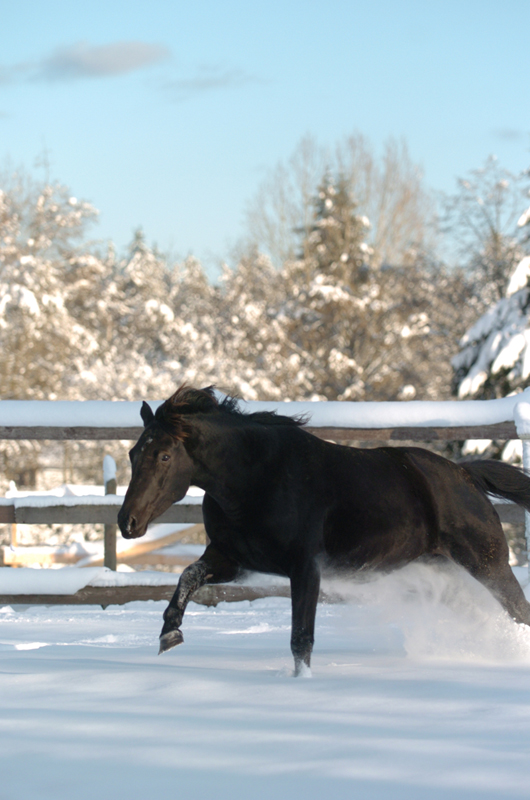
Your horse may be more likely to demonstrate high spirits in cold weather because activity generates body heat, especially in a well fed horse. Photo: Robin Duncan Photography
The foundation of all equine energy requirements is the maintenance energy requirement, or the need for energy to fuel all the basic “housekeeping” type bodily functions including (but not limited to) breathing, chewing, digestion, heart rate, and immune function in a thermo-neutral environment (where no additional energy is required to keep the body warm). Bodily functions such as exercise, growth, pregnancy, and lactation, and environmental conditions such as wind, rain, and cold weather all require additional energy from digested feedstuffs.
Sources of Equine Energy
Energy in the equine diet comes primarily from carbohydrate and fat digestion. Carbohydrates are commonly the most significant contributor to the energy balance in an equine diet. Carbohydrates can be subdivided into two categories: non fibrous carbohydrates and fibrous, or complex, carbohydrates.
Non fibrous carbohydrates include starch and simple sugars. These can be digested rapidly in the stomach and small intestine of the horse to the basic sugar “glucose.” Glucose is readily taken up by the tissue of the small intestine and transported into the bloodstream where it is moved through the actions of insulin into body tissues to be stored either as glycogen or body fat. From there it is available to the horse for use as energy in metabolic functions, including work. Dietary sources of sugars and starches are primarily grains and manufactured feeds.
Fibrous or complex carbohydrates include cellulose and some complex sugars such as fructan. They cannot be digested in the enzymatic environment of the stomach and small intestine of the horse and instead are fermented by the natural microbes residing in the cecum or hindgut to energy sources called volatile fatty acids (VFAs). VFAs are absorbed through the gut wall and transported through the bloodstream to the liver where they are converted to energy precursors such as glucose or fat. The most common source of complex carbohydrate in your horse’s diet is forage such as grass or alfalfa hays. Because fermentation of complex carbohydrates in forages by the natural microbial population in the cecum generates heat, forages are an excellent winter feed.
Fats are also an excellent source of calories for horses. Fats contain approximately 2.25 times the calories of starch on a weight for weight basis, so they can contribute significantly to the energy balance of your horse in extremely cold weather. Fat must be digested and absorbed in the stomach and small intestine of the horse so if you are feeding fat as an energy source it is important to feed it in small meals to avoid forcing undigested fat into the hindgut. Fat is not handled well by the microbes in the cecum and if overfed will reduce hindgut function potentially cause loose oily manure, gas, and, in some cases, colic.
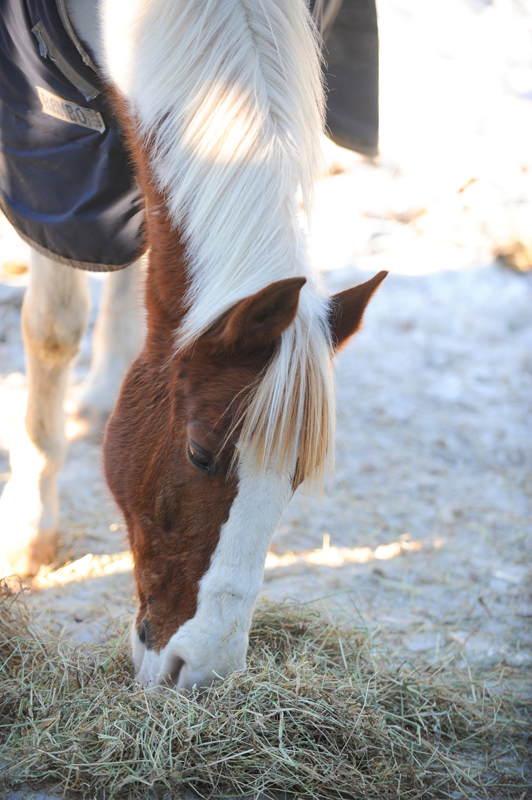
Digestion of the complex carbohydrates in forages such as grass or alfalfa hays generates body heat, making forage an important feed during the cooler months of fall and winter. Photo: Robin Duncan Photography
Protein is not a primary energy source but can be used for energy when fed in excess of metabolic requirements. The horse has no ability to store protein for future use so excess protein is frequently used for energy. The carbon skeleton of the protein molecule can be used for energy and the nitrogen containing part of the protein molecule is excreted through the function of the liver and kidneys. Protein can contribute significantly to the energy balance of the horse in winter.
Forages: The Perfect Energy Source for Your Horse
For most mature horses doing light to moderate work during a temperate winter climate, forages such as grass or alfalfa hay will provide most of their energy needs. Horses that are working, growing, senior, and pregnant, or living in extreme winter weather conditions, may need more energy from additional feed sources – usually grains containing additional protein, fats, and starches.
Beware of the assumption that “average” hay is always average. Hay can vary hugely in its energy generating capability depending on the analysis. Hay that is high in lignin, an indigestible substance that accumulates in the forage as it matures, is much less digestible and will yield less energy when fed to your horse. It is important to base ration balancing decisions for winter feeding on a good hay test. Consider having your hay analyzed for nutrient content in order to accurately assess its contribution to your winter feeding program.
Optimize Your Winter Feeding Regime
The goal in any winter feeding program for your horse is to balance his energy requirements with his energy intake. To successfully accomplish this, it is imperative that you accurately assess what your horse’s energy requirements are and formulate a ration to meet them. Start off with an accurate body weight for your horse (a tape measure or a weight tape work very well when used properly) and calculate how much feed he should be consuming daily.
A good rule of thumb for a mature healthy horse doing light work is approximately 2 to 2.5 percent of his body weight in feed intake per day. That means your 1000-pound horse will require approximately 20 to 25 pounds in total of hay and concentrate daily. Try as much as possible to stretch that feed intake out over at least three meals daily. Your horse will be happier and healthier as a result.
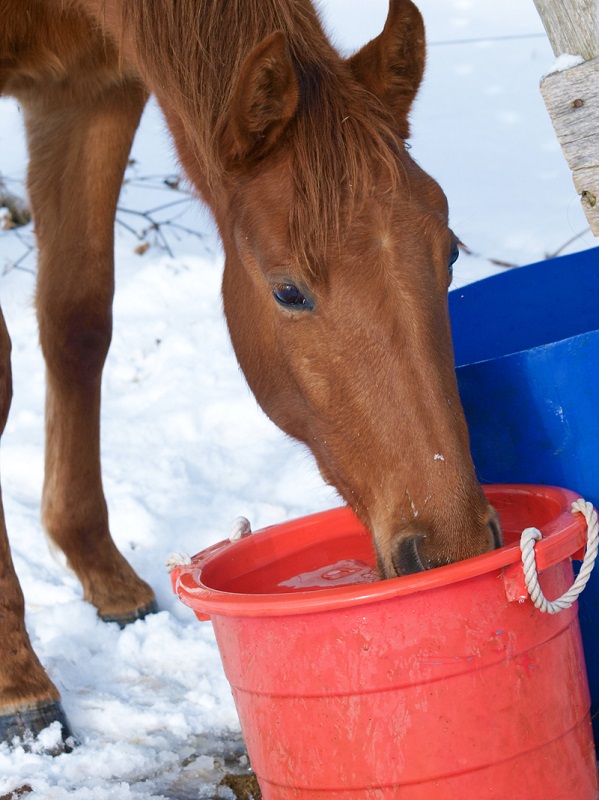
A horse that is dehydrated will not consume as much feed and is at much greater risk of colic. Encourage your horse to drink during the cooler months by ensuring access to fresh, clean water at all times. Photo: Pam MacKenzie Photos
Be honest in your assessment of your horse’s requirements. A mature 1000-pound Quarter Horse ridden lightly three times per week probably doesn’t need much more energy than his maintenance requirements. On the other hand, if you have a mature 1000-pound Thoroughbred that is a high anxiety animal, he may require more energy just to keep the lights on and the furnace going (so to speak) than his equivalent bodyweight Quarter Horse counterpart.
Energy fed in excess of requirements has to go somewhere. If you find that your horse is either getting too fat or is trying to tear the barn down, you should reassess your feeding program. Changing energy sources can sometimes be helpful. Consider changing from a hay and grain based diet to a diet based on hay fed in combination with concentrates formulated around hindgut fermented fibre sources, such as soy hulls, instead of starch. “Fibre in a bag” type feeds can be an excellent resource for increasing energy intake without increasing calories from starch.
Don’t forget the importance of water in meeting your horse’s energy needs in a successful winter feeding regime. Horses that are dehydrated will not consume as much feed and are at much greater risk of colic. Water should be clean and plentiful, with no ice if at all possible.
Weather conditions will also play a part in your successful winter feeding program. A sudden drop in temperatures in a climate that is normally mild and wet will generate an increased energy requirement for your horse. Make sure you adjust your feeding program back to a more moderate energy regime when the weather returns to more seasonable temperatures.
Equine high spirits are sometimes unavoidable in cold weather. High activity generates more body heat in a well fed horse and so your horse may be keeping you busy in the riding arena or out on the trail simply because it makes him feel good to work hard and generate body heat. Just make sure you wear your hard hat and then enjoy that winter ride!
Main photo: iStock/OlgalT



